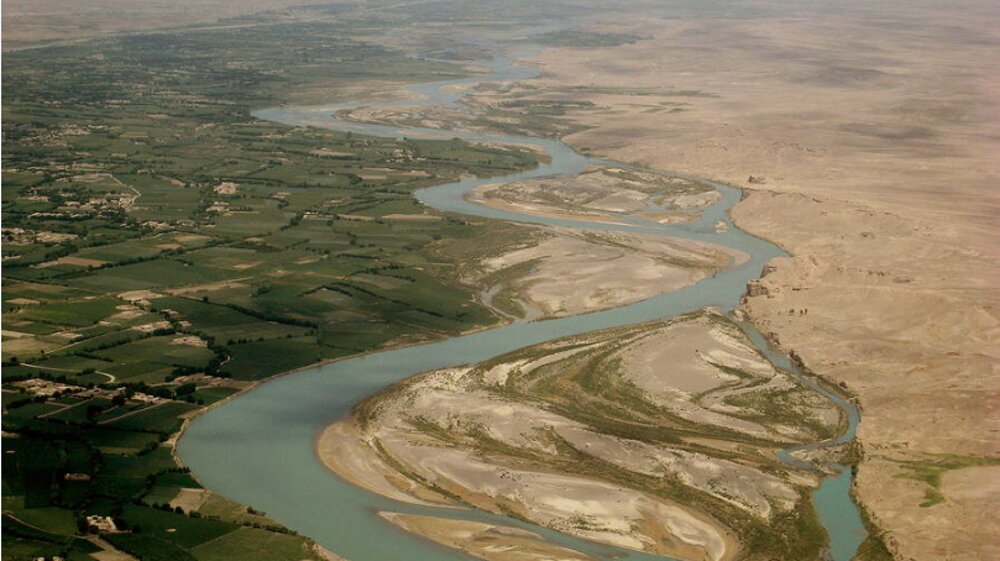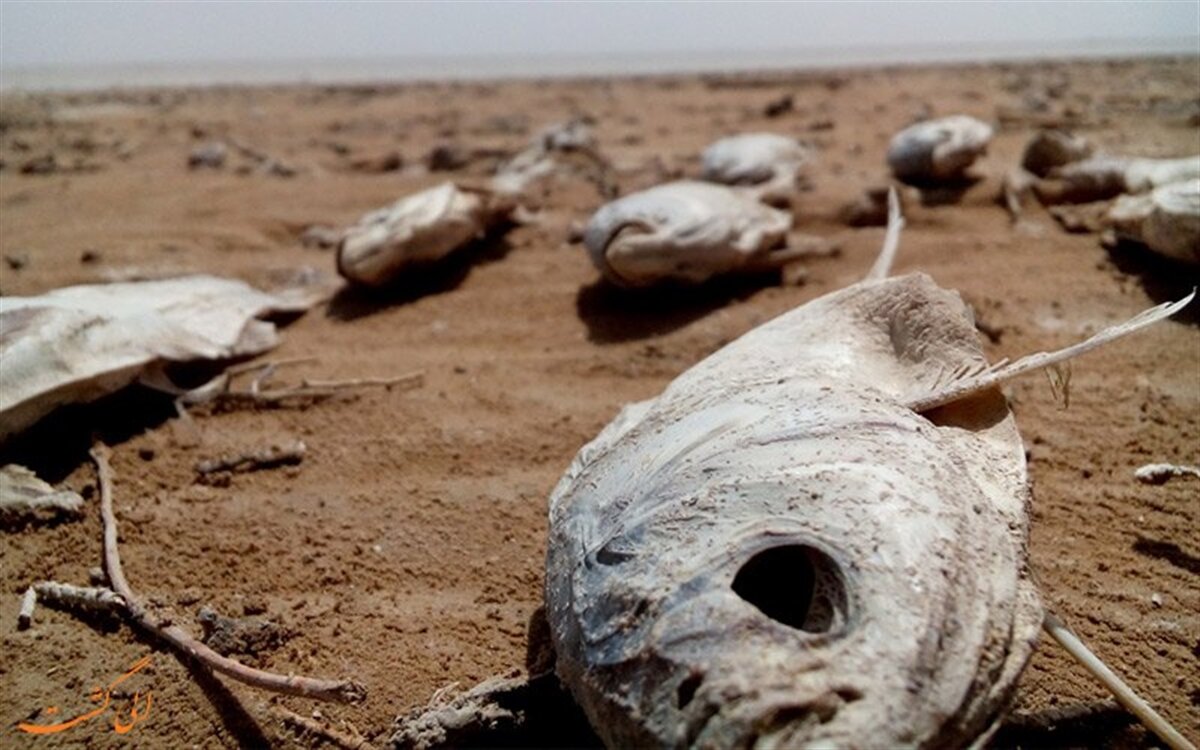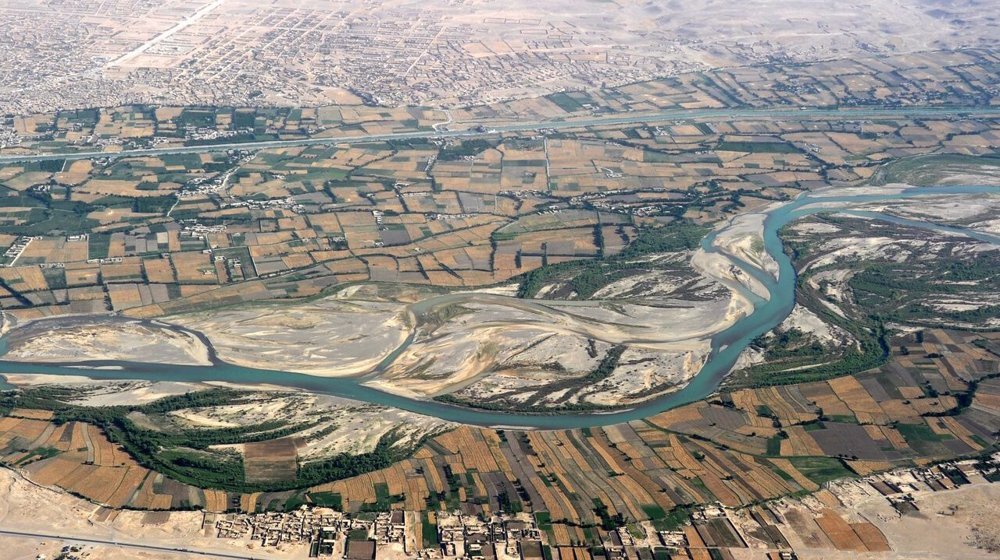Iran (IMNA) - Long periods of drought in southeast Iran have recently made the issue much worse, requiring Iranian officials to exert further pressure on the de facto Taliban authority in Kabul to provide Iran its fair share of water from the Helmand River.
Since the 1870s, when Afghanistan was governed by the British, there have been water-related struggles between Iran and Afghanistan. Following with Herat's separation from Iran, a British envoy established the border between Iran and Afghanistan following the Helmand River's major branch.
The Afghan government failed to approve the 1939 agreement between the Iranian and Afghan governments to share the river's water.
Finally, in 1973, the two parties agreed to a deal in which Iran would get 820 million cubic meters of water year at a flow rate of 22 cubic meters per second, with the option to purchase an extra four cubic meters per second during "normal" water years.
Political events, such as the 1973 Afghan coup, the Soviet occupation of Afghanistan that same year, and eventually the establishment of the Taliban in 1995, prevented the deal from being signed or completely implemented.
The supply has been irregular because to the 40 years of conflict in Afghanistan. Plans to build new dams are being prompted by the severe drought that has affected parts of Afghanistan, escalating tensions with Iran. Tehran has already expressed worry that the massive Salma Dam in western Herat province, which was sponsored by India and opened in 2016, will have less water available to it.
The Helmand River, which originates in the mountains to the north of Kabul and flows through a large portion of Afghanistan before feeding the Sistan marshes at the boundary between the two countries, is at the focus of the conflict.

Since the Taliban took power in 2021, Kabul officials have stressed respect to the Helmand accord, but in fact, Iran has not gotten a fair amount of river water.
However, a variety of variables impact the treaty's implementation, including Afghan government policies and techniques, the country's requirements, and challenges connected to climate change, among others.
According to experts, the problem stems from Afghanistan's instability and frequent changes of rulership, with each administration treating Iran's rights differently.
University professor and Afghan affairs specialist Ahmad Bakhshi claims that multiple Helmand River diversion channels have been built as a result of long-running conflicts in Afghanistan and a lack of oversight from the central government.
"Afghanistan has never actually experienced a stable or peaceful administration. The Afghan administration formerly cited a lack of water upstream as a justification, but [previous president] Ashraf Ghani later said in an official address that Iran had to provide oil in exchange for water.
"In other words, when you look at the various Afghan regimes, you see that they raise political concerns rather than consider the deal under which Iran and Afghanistan should perform their commitments. These concerns are brought up even when Afghanistan is stable and law and order is there.
Afghanistan's administrations are encouraged by popular opinion, which generally feels that any water originating in the country should be provided to Afghans.
Afghanistan, a country with roughly 20 million farmers, has suffered a sharp decline in agricultural output as a result of the drought. Officials believe more dams are needed to support the country's agriculture industry, which is the backbone of its $20 billion economy.
The Helmand River is located in a low-rainfall environment. Furthermore, the provinces next to the river have a variety of specifications, and there is little adherence to international responsibilities in their public opinion demands. "They say, for example, that Helmand water should not flow out of Afghanistan," Bakhshi explained.
As a result, successive Afghan administrations have attempted to boost agriculture in the Helmand Valley by building irrigation canals and dams.
The Afghan government hired the US firm Morrison-Knudsen to install irrigation infrastructure in Helmand in 1946.
Halfway through restoring ancient canals, Morrison-Knudsen advised that a storage dam and reservoir be erected to make the greatest use of water. According to a subsequent analysis by the US Agency for International Development, the work was done without an environmental assessment, which proved to be a "fatal weakness" of the project.
Iranians are in pain
The Helmand is Afghanistan's longest river, accounting for more than 40% of the country's surface water. It runs 1,150 kilometers from the Hindu Kush mountains to the Hamoun marshes in Iran's Sistan Basin, which historically hosted a diverse range of plant and animal life.
The building of multiple dams and canals in Helmand, Nimruz, and Kandahar has steadily lowered the flowing water level, causing the Hamoun lakes and their unusual flora and wildlife to practically vanish.
The problem was exacerbated when Taliban officials cut off water from the Kajaki dam to Iran between 1998 and 2001, during one of the region's worst droughts.
Dust storms from the drained Hamoun lakes have wreaked havoc on Iran's public health. The region's economy has suffered greatly, and hundreds of peasants have fled to cities for safety. The deteriorating economic environment, unemployment, and loss of agricultural revenue in both countries have given rise to the trafficking of illicit substances originating in Afghanistan.

Former President Ghani's decision to open the Kamal Khan Dam in March 2021 exacerbated the problem. The dam was erected in Nimruz province on the lower Helmand River.
Helmand water is measured at the Kamal Khan dam and divided between Iran and Afghanistan per the 1973 deal.
Hasan Kazemi Qomi, the Iranian ambassador, claims that the Kamal Khan is a diversion dam with a bypass that directs excess water to the Gowdzare salt marsh in Afghanistan. This indicates that water flow has now decreased to a trickle from Helmand to Iran.
Iran Faces Water Crisis Amidst Afghan Refugee Influx and Unresolved Water Disputes
Years of war and occupation by the United States and other forces have left Afghanistan in ruins, with successive administrations unable to develop a successful water storage and management system.
Iran has been on the receiving end of the crisis, with millions of Afghan refugees and immigrants, many illegal, burdening the country for decades under the most sever Western sanctions.
Afghanistan has been the world's leading opium producer for many years, and Iran has spent significant resources to combating drug trafficking.
The problem has heightened discontent in Iran, where some claim that Afghanistan is "wasting Iran's share of water" on the growing of poppies and only allows water to flow into Iran during floods.
We have around 4 million Afghans in Iran, according to a parliamentarian from Torbat-e Heydarieh in the Khorasan province of Iran. The Afghan population in Iran utilizes 400 million liters of water per day, assuming that each individual uses 100 liters per day.
However, the Iranian people and system generally have a supportive and tolerant attitude toward the Afghan people. No matter their immigration status, all Afghan children should have access to free education, according to an instruction from the Leader of the Islamic Revolution, Ayatollah Seyyed Ali Khamenei.
At a summit in Tokyo in 2002, Tehran was one of the biggest contributors, contributing more than India, Saudi Arabia, the United Arab Emirates, Turkey, Norway, Switzerland, Australia, and Pakistan put together.
However, if they do not take significant efforts to confront and settle their disagreement once and for all, animosity between Iran and Afghanistan over water resources is certain to rise.
The two nations can only proceed toward wise management of their water resources with the help of outside assistance.
They should first come to an understanding on the contract they have signed and define its terms. Later, they should take systematic action to manage their water resources effectively. The effects of climate change will worsen if water is not managed properly.

To this end, it is essential for the two countries to expand communication channels and properly manage joint projects and invest in improving the water management systems of both countries.
In the absence of proper management, one of the parties would tend to compensate for the waste of its water resources from the other's water right. They must come to the conclusion that a sustainable solution to their dispute is one that provides for the interests of both parties in a conventional and fair manner.
In order to do this, it is crucial for the two nations to improve their water management systems and to open up new lines of communication and collaboration.
Without adequate management, one of the parties would often tend to use the other's water right to make up for the squandering of its own water resources. They must realize that the only lasting resolution to their conflict is one that conventionally and fairly protects the interests of both sides.


Your Comment